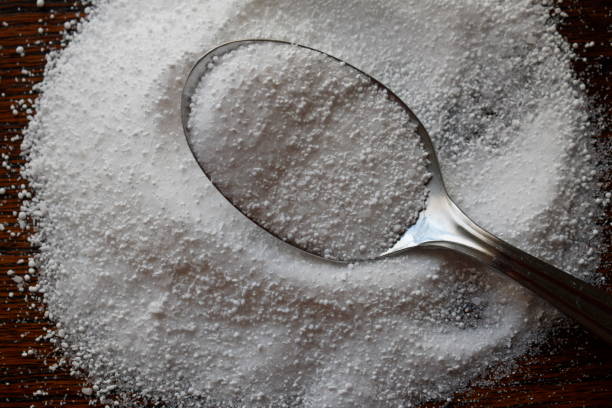Blog
Molar Mass of Calcium Carbonate: Everything You Need to Know
The molar mass of calcium carbonate is a fundamental concept in chemistry that is crucial for various calculations, from laboratory experiments to industrial applications. Calcium carbonate is a compound made up of calcium (Ca), carbon (C), and oxygen (O). Understanding its molar mass allows scientists and students to calculate its weight in different reactions and processes. In this article, we will discuss how to calculate the molar mass of calcium carbonate, its formula, and why it’s essential.
What is Calcium Carbonate?
Calcium carbonate (CaCO₃) is a common substance found in rocks, such as limestone and marble. It’s also the main component of shells of marine organisms, eggshells, and pearls. Industries such as construction, medicine, and manufacturing widely use calcium carbonate. It plays a vital role in everyday products like cement, antacids, and dietary supplements.
Chemical Formula of Calcium Carbonate
The chemical formula of calcium carbonate is CaCO₃, representing one atom of calcium (Ca), one atom of carbon (C), and three atoms of oxygen (O). Each element contributes to the overall molar mass of calcium carbonate by adding up the atomic masses of the individual elements.

How to Calculate the Molar Mass of Calcium Carbonate?
The molar mass of calcium can be calculated using the atomic masses of calcium, carbon, and oxygen. Here’s how to break it down:
- Calcium (Ca) has an atomic mass of approximately 40.08 g/mol.
- Carbon (C) has an atomic mass of approximately 12.01 g/mol.
- Oxygen (O) has an atomic mass of approximately 16.00 g/mol.
To find the total molar mass of calcium , we use its chemical formula CaCO₃. The calculation goes as follows:
- 1 calcium atom = 40.08 g/mol
- 1 carbon atom = 12.01 g/mol
- 3 oxygen atoms = 3 × 16.00 g/mol = 48.00 g/mol
Molar mass of calcium = 40.08 g/mol + 12.01 g/mol + 48.00 g/mol = 100.09 g/mol
Thus, the molar mass of calcium carbonate is 100.09 grams per mole (g/mol).
Importance of the Molar Mass of Calcium Carbonate
Understanding the molar mass of calcium is critical for several reasons:
- Chemical Reactions: In chemical reactions, knowing the molar mass allows you to calculate how much of a substance is required or produced. This is essential for balancing chemical equations and determining reactant amounts.
- Stoichiometry: Molar mass plays a key role in stoichiometry, the branch of chemistry that deals with the relative quantities of reactants and products in chemical reactions. It helps in converting between grams and moles, a basic requirement in many laboratory and industrial processes.
- Industrial Applications: Industries like construction and pharmaceuticals extensively use calcium carbonate. Knowing its molar mass ensures accurate measurements, improving efficiency and product quality.
Practical Uses of Calcium Carbonate
Here are some of its practical uses:
1. Construction Industry
In the construction sector, calcium carbonate is a primary ingredient in cement and concrete. Its molar mass helps calculate the precise amounts needed for building materials.
2. Medical Industry
Calcium carbonate is a popular ingredient in antacids due to its ability to neutralize stomach acid. Understanding its molar mass ensures proper dosage in pharmaceuticals.
3. Agriculture
Farmers rely on its molar mass to measure the correct quantity to spread on their fields.
4. Food and Beverage Industry
It’s used as a food additive, often found in baking powders and calcium supplements. Accurate measurements of calcium carbonate, based on its molar mass, are essential in ensuring product safety and efficacy.
Steps to Determine Molar Mass of Calcium Carbonate in the Lab
Calculating the molar mass of calcium in a laboratory setting involves a simple process:
- Weigh the Sample: Measure the mass of a sample of calcium carbonate using a balance.
- Determine the Moles: Use the formula Moles=Mass of SampleMolar Mass\text{Moles} = \frac{\text{Mass of Sample}}{\text{Molar Mass}}Moles=Molar MassMass of Sample to determine the number of moles in the sample.
- Perform Calculations: Apply the molar mass (100.09 g/mol) in any required chemical reaction or formula to determine quantities.
This process helps in accurately measuring and using calcium carbonate in reactions and other practical applications.
Understanding Molar Mass in Chemistry
In chemistry, molar mass refers to the mass of one mole of a given substance, whether it’s a molecule, compound, or atom. Understanding the molar mass of compounds like calcium is fundamental for accurate chemical calculations. It aids in converting between different units, such as moles and grams, allowing for precise formulation in both research and industry.
Conclusion
The molar mass of calcium (100.09 g/mol) is a crucial piece of information in chemistry. Whether you’re working in a laboratory, engaging in industrial production, or learning in a classroom, the ability to calculate and use molar mass accurately is essential. From balancing equations to producing products, understanding molar mass helps ensure precision and efficiency in chemical processes.
